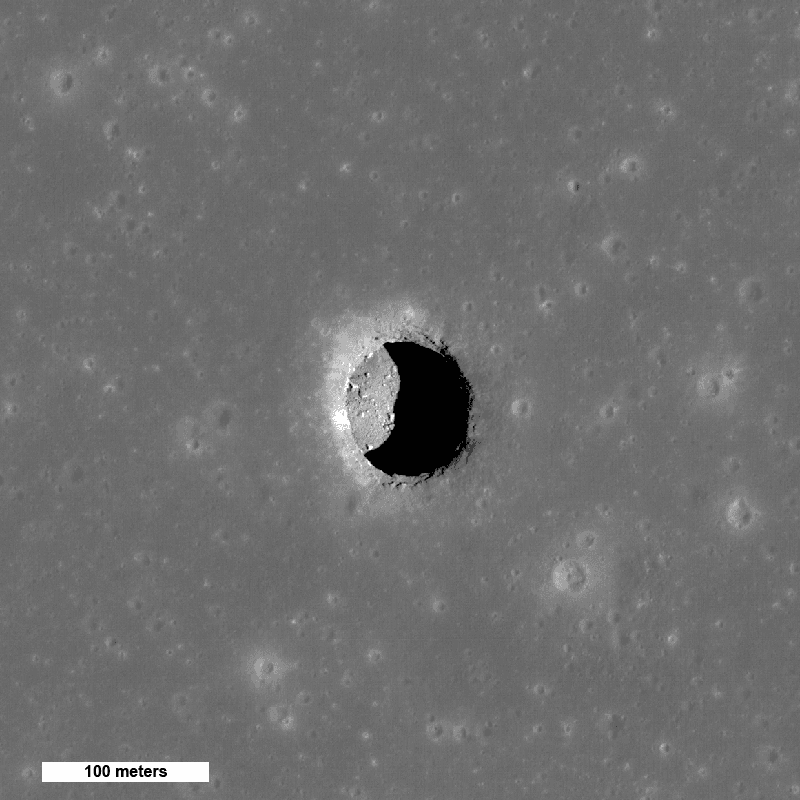The moon just got a little more mysterious, with news NASA suspects shaded openings on the surface might be entrances to hidden caves.
Stranger still, these pits host temperatures comfortable to humans: 63 degrees, scientists say.
The discovery, announced July 26, is reminiscent of a classic science fiction novel, with H.G. Wells’ “The First Men in the Moon” depicting lunar caves as suitable for hosting “intelligent life forms.”

NASA-funded scientists calculated the pit temperatures using data from NASA’s Lunar Reconnaissance Orbiter.
“The pits, and caves to which they may lead, would make thermally stable sites for lunar exploration compared to areas at the Moon’s surface, which heat up to 260 F (about 127 C) during the day and cool to minus 280 F (about minus 173 C) at night,” NASA reported.
“Pits were first discovered on the Moon in 2009, and since then, scientists have wondered if they led to caves that could be explored or used as shelters. The pits or caves would also offer some protection from cosmic rays, solar radiation and micrometeorites.”
NASA has documented more than 200 moon pits and “two of the most prominent pits have visible overhangs that clearly lead to caves or voids.”
Sixteen of the pits are believed to be “collapsed lava tubes,” according to Tyler Horvath, a doctoral student in planetary science who led the new research.
Lava tubes are formed when subsurface lava flows leave behind long tunnels, experts say. In some cases, the ceilings collapse, creating an entrance “into the rest of the cave-like tube.”
“Knowing that they create a stable thermal environment helps us paint a picture of these unique lunar features and the prospect of one day exploring them,” Lunar Reconnaissance Orbiter Project scientist Noah Petro said in a release.
The study used thermal camera data collected from a 328-foot–deep depression “about the length and width of a football field.”
Results showed temperatures in “permanently shadowed reaches of the pit fluctuate only slightly throughout the lunar day, remaining at around 63 F.”
Scientists believe this happens because “the shadowing overhang” acts like a porch, “limiting how hot things gets during the day and preventing heat from radiating away at night.”
“If a cave extends from the bottom of the pit, as images taken by LRO’s Lunar Reconnaissance Orbiter Camera suggest, it too would have this relatively comfortable temperature,” NASA concluded.
A “lunar day” equals about 15 Earth days, NASA says, with “brutally cold” nights and daytime conditions “hot enough to boil water” on the surface.
___
© 2022 The Charlotte Observer
Distributed by Tribune Content Agency, LLC.



